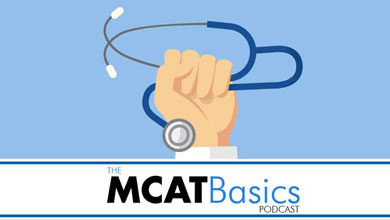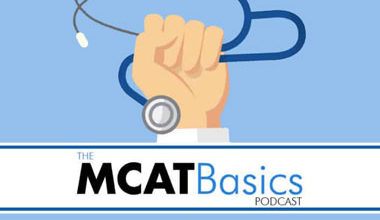The MCAT Basics Podcast continues the series on Metabolism, and in today’s episode, Alex Starks talks about gluconeogenesis. This episode covers the processes of gluconeogenesis, why it’s important, the sources of noncarbohydrate precursors, and the amount of ATP used during gluconeogenesis.
- [01:38] The Process of Gluconeogenesis
- [04:10] Sources of Noncarbohydrate Material
- [07:55] The Key Steps in Gluconeogenesis
- [15:24] Hormonal Control of Gluconeogenesis
- [16:30] Gluconeogenesis and the Amount of ATP Used
- [18:02] Quiz and Important Takeaways
What is Gluconeogenesis?
Although the body can survive without glucose, some tissues, such as the brain and red blood cells, primarily depend on glucose as the main fuel source. So, what happens when the body runs out of glucose? In a fasted state, glycogen stores can comfortably supply these tissues with glucose for approximately one day. However, when the glycogen stores run out, glucose must be formed from noncarbohydrate precursors, primarily lactate, certain amino acids, and glycerol. And this is where gluconeogenesis, the pathway for converting noncarbohydrate precursors into glucose, comes into play. Interestingly, most tissues cannot carry out gluconeogenesis. So, gluconeogenesis primarily takes place in the liver and to a lesser extent in the cortex of the kidney.
The reverse of gluconeogenesis is glycolysis. There are only three irreversible steps in gluconeogenesis opposite the glycolysis pathway, while the other seven steps are common.
Key Steps in Gluconeogenesis
There are a total of ten steps in gluconeogenesis:
- Step 1: In step 1, pyruvate is converted into phosphoenolpyruvate. If you can remember, in glycolysis, a lot of energy is released when phosphoenolpyruvate is converted into pyruvate. This means that doing the reverse is not energy efficient and so two steps are needed. The first sub-step is energy favorable and adds carbon dioxide into the pyruvate-forming oxaloacetate. By removing the carbon dioxide, the energy is created to add the phosphate into the pyruvate and rearrange the double bond to form phosphoenolpyruvate. When this is done, the steps are similar to glycolysis, but in the reverse.
- Step 2: Phosphoenolpyruvate rearranges into 2-phosphoglycerate.
- Step 3: 2-phosphoglycerate rearranges into 3-phosphoglycerate.
- Step 4: 3-phosphoglycerate gets another phosphate added, forming 1,3-bisphosphoglycerate.
- Step 5: 1,3-bisphosphoglycerate rearranges into glyceraldehyde.
- Step 6: Glyceraldehyde combines with another 1,3-bisphosphoglycerate to form fructose 1,6-bisphosphate.
- Step 7: Fructose 1,6-bisphosphate loses a phosphate and becomes fructose 6-phosphate.
- Step 8: Fructose 6-phosphate rearranges to form glucose 6-phosphate.
- Step 9: Glucose 6-phosphate loses the phosphate to form the final product, glucose.
For the most part, the same enzymes are used to go either direction in glycolysis and gluconeogenesis. So, if you can master glycolysis, then gluconeogenesis won’t be a tough nut to crack.

